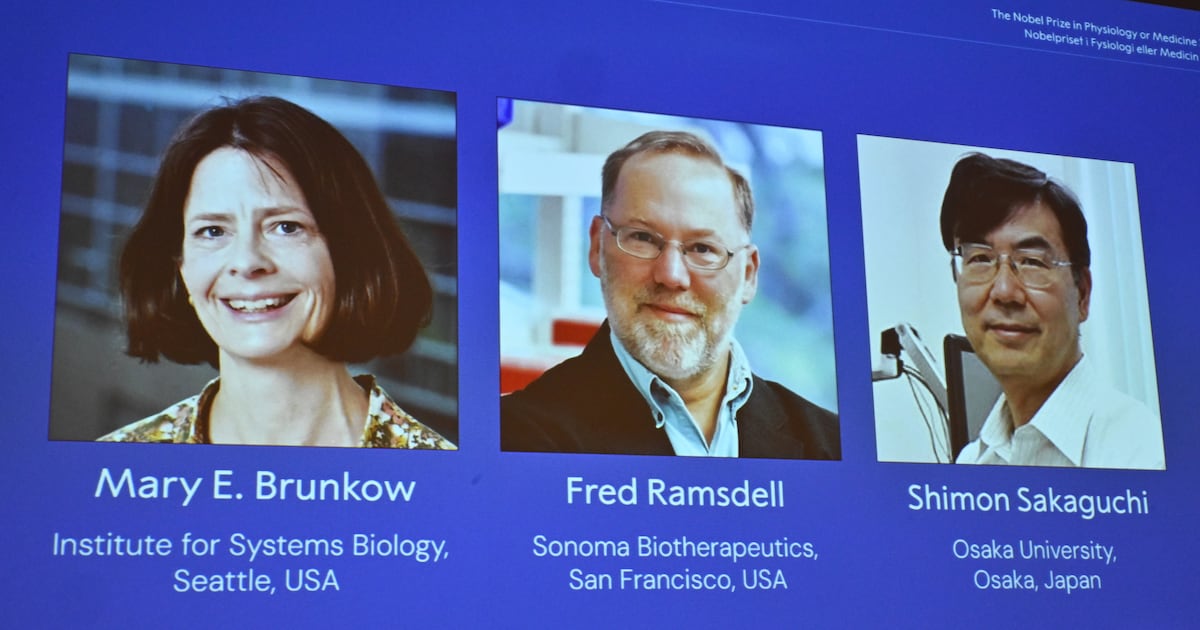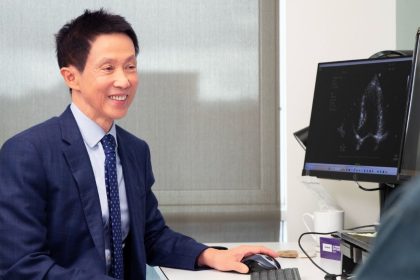Mary E. Brunkow, Fred Ramsdell, and Dr. Shimon Sakaguchi were awarded the Nobel Prize in Physiology or Medicine on Monday for their groundbreaking work on peripheral immune tolerance. This honor highlights their significant contributions to our understanding of the human immune system and the mechanisms preventing the development of autoimmune diseases.
Brunkow, 64, serves as a senior program manager at the Institute for Systems Biology in Seattle. Her colleague, Ramsdell, also 64, is a scientific adviser at Sonoma Biotherapeutics in San Francisco. Meanwhile, 74-year-old Sakaguchi holds a prestigious position as a professor at Osaka University’s Immunology Frontier Research Center in Japan.
Olle Kämpe, chair of the Nobel Committee, stated, “Their discoveries have been decisive for our understanding of how the immune system functions and why we do not all develop serious autoimmune diseases.”
The Nobel Prize is the first announcement in the 2025 series. The ceremony hosted by the Karolinska Institute in Stockholm has marked the commencement of announcements for various prizes this week; physics will be revealed on Tuesday, chemistry on Wednesday, and literature on Thursday, with the Nobel Peace Prize to follow on Friday. The Nobel Memorial Prize in Economic Sciences will conclude the announcements on October 13. The awards ceremony is scheduled for December 10, the anniversary of Alfred Nobel’s death in 1896, a Swedish industrialist and inventor of dynamite.
The trio will share a prize of 11 million Swedish kronor, approximately $1.2 million.
Understanding the Immune System
The human immune system operates through complex systems that detect and combat threats like bacteria and viruses. Central to this defense are T cells, essential immune fighters that learn to identify harmful entities. Additionally, T cells that may trigger autoimmune diseases are typically eliminated in the thymus through a process called central tolerance.
The Nobel laureates shed light on an alternative mechanism governing immune regulation. Sakaguchi’s pivotal discovery in 1995 revealed a novel subtype of T cells, known as regulatory T cells or T-regs. In 2001, Brunkow and Ramsdell identified a mutation in the Foxp3 gene, crucial in regulating the immune response and also linked to a rare autoimmune disease in humans.
During their collaboration at a biotechnology company, Brunkow and Ramsdell investigated why a certain mouse strain displayed an overactive immune response. They employed innovative techniques to uncover the underlying gene issue, realizing the potential implications for human health. Brunkow remarked, “From a DNA level, it was a really small alteration that caused this massive change to how the immune system works.”
Expanding on their findings, Sakaguchi later demonstrated that the Foxp3 gene is pivotal in forming T-regs, which function as guardians to manage other T cells that might overreact.
The Significance of Their Research
Their collective efforts have paved the way for a new field within immunology, according to Karolinska Institute rheumatology professor Marie Wahren-Herlenius. Numerous researchers globally are now exploring ways to utilize regulatory T cells to formulate therapies aimed at treating autoimmune diseases and cancer.
Dr. Jonathan Schneck, a pathology professor at Johns Hopkins University, acknowledged the critical nature of their research, stating that before the trio’s contributions, the complexities of immune differentiation were largely misunderstood. He noted, “It’s incredibly important to emphasize, this work started back in 1995 and we’re reaping the benefits but yet have many more benefits we can reap.”
Reactions from the Winners
Upon learning of the award, Thomas Perlmann, the Nobel Committee’s secretary-general, managed to speak with Sakaguchi directly. “He sounded incredibly grateful, expressed that it was a fantastic honor. He was quite taken by the news,” Perlmann recounted. He had left unanswered calls for Brunkow and Ramsdell earlier that day.
At a subsequent news conference, Sakaguchi described his recognition as “a happy surprise,” indicating he initially believed more time was needed before the practical applications of the research emerged. “In the beginning, the area of my research was not very popular, and I had to struggle at times to earn research funding,” he said, acknowledging teamwork among fellow researchers.
“There are many illnesses that need further research and treatment, and I hope there will be further progress in those areas so that findings will lead to prevention of diseases. That’s what our research is for,” he added.
Sakaguchi’s news conference was notably interrupted by a congratulatory call from Japanese Prime Minister Shigeru Ishiba, prompting a discussion on the timeline for potential clinical applications concerning cancer treatments. Sakaguchi optimistically mentioned, “Hopefully, we can reach that stage in about 20 years, though I’m not sure if I will still be around. But science will advance and by that time cancer will no longer be scary but treatable.”
Brunkow received her news in a rather unexpected manner; an Associated Press photographer arrived at her Seattle home early in the morning to deliver the great news. She had previously dismissed a call from the Nobel Committee, thinking it was a spam call. “When I told Mary she won, she said, ‘Don’t be ridiculous,’” her husband, Ross Colquhoun, said.
Attempts to contact Ramsdell for his thoughts were unsuccessful at the time of reporting.






